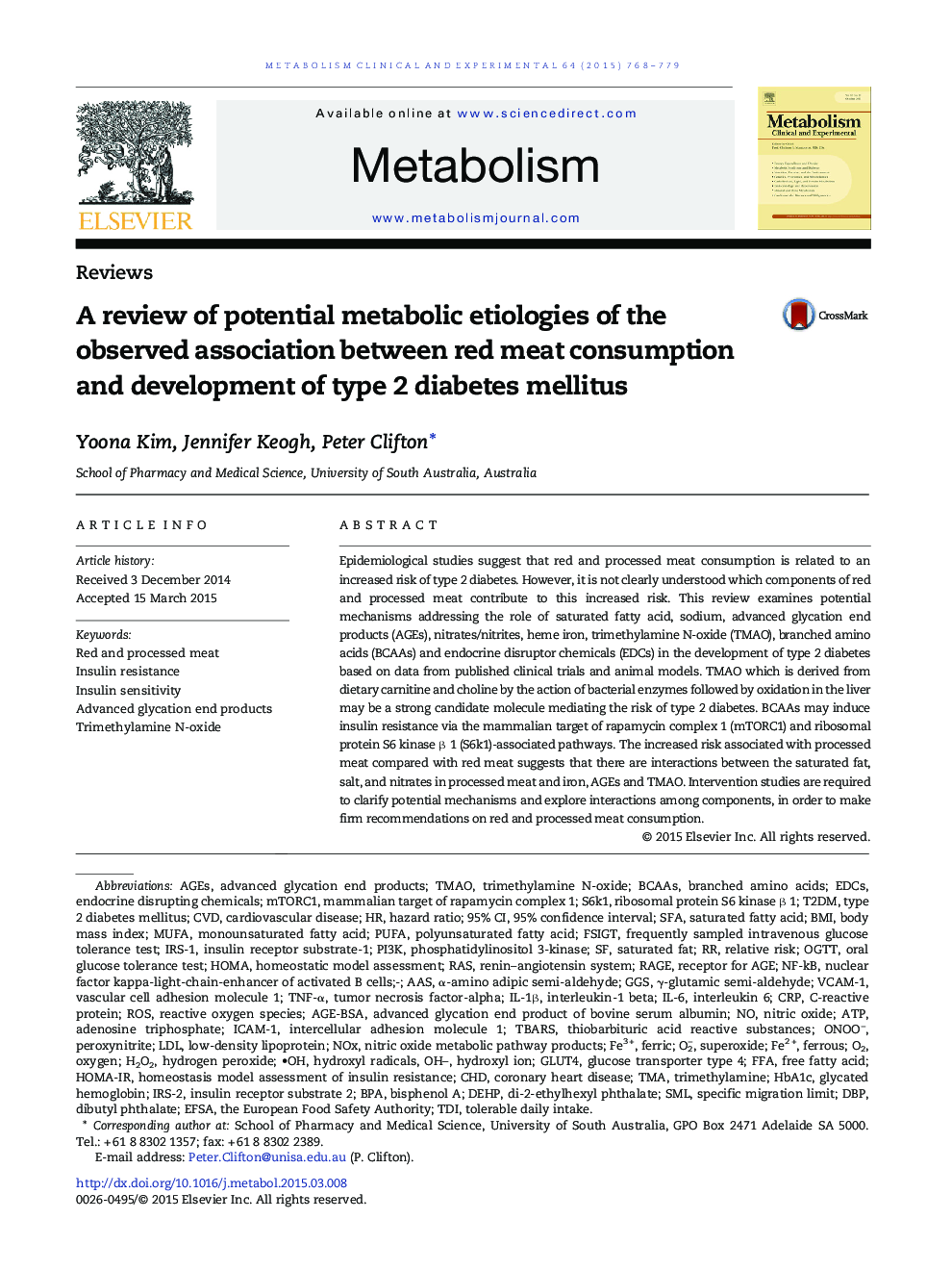| کد مقاله | کد نشریه | سال انتشار | مقاله انگلیسی | نسخه تمام متن |
|---|---|---|---|---|
| 2805650 | 1157070 | 2015 | 12 صفحه PDF | دانلود رایگان |
Epidemiological studies suggest that red and processed meat consumption is related to an increased risk of type 2 diabetes. However, it is not clearly understood which components of red and processed meat contribute to this increased risk. This review examines potential mechanisms addressing the role of saturated fatty acid, sodium, advanced glycation end products (AGEs), nitrates/nitrites, heme iron, trimethylamine N-oxide (TMAO), branched amino acids (BCAAs) and endocrine disruptor chemicals (EDCs) in the development of type 2 diabetes based on data from published clinical trials and animal models. TMAO which is derived from dietary carnitine and choline by the action of bacterial enzymes followed by oxidation in the liver may be a strong candidate molecule mediating the risk of type 2 diabetes. BCAAs may induce insulin resistance via the mammalian target of rapamycin complex 1 (mTORC1) and ribosomal protein S6 kinase β 1 (S6k1)-associated pathways. The increased risk associated with processed meat compared with red meat suggests that there are interactions between the saturated fat, salt, and nitrates in processed meat and iron, AGEs and TMAO. Intervention studies are required to clarify potential mechanisms and explore interactions among components, in order to make firm recommendations on red and processed meat consumption.
Journal: Metabolism - Volume 64, Issue 7, July 2015, Pages 768–779
